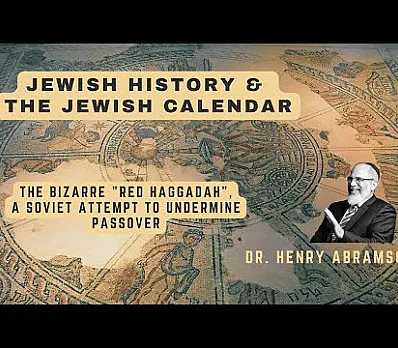The Secret Seder in a Nazi Concentration Camp

On this night, we also remember a fifth child. This is the child of the Holocaust who did not survive to ask, "Why was the night of Passover, 1943, different from all other Passover nights?" And so, we ask for that child.
The conditions within the Vaihingen Concentration Camp were horrific, especially during that dreadful winter of 1944-1945.The Jews living within this Nazis concentration camp were imported from the Radom Ghetto in Poland in order to engage in slave labor for 12 hour shifts, without a break.They built armaments, dug tunnels for bomb shelters, and performed many other highly physical tasks for the Nazis, who sought to bring their armaments manufacturing underground due to intense Allied bombing. The sub human conditions and treatment of prisoners caused Vaihingen Concentration Camp to haveone of the highest mortality rates of all of the Nazis concentration camps.In the beginning, only Jews lived in this Nazis concentration camp, yet later on, French and German prisoners were sent there as well. Towards the end of the war, the Vaihingen Concentration Camp was where sick and dying people were sent. However, despite all of these afflictions that the Jews of the Vaihingen Concentration Camp suffered,they still managed to celebrate the Passover Seder.
They were determined to preserve the traditions of their ancestors, despite the fact that doing so was risky business in a Nazis concentration camp. One camp resident, Moshe Perl, whose testimony is preserved in Inferno and Vengeance, asserted: “The people in the camp were already used to their miserable situation. They saw death before their eyes. But they were not willing to eat chametz on Passover.” Yet he asked, “Where could be get flour and potatoes and how could we bake matza?”
Perl managed to find an innovative solution, however. Perl asserted, “Shortly before Passover, one of the SS men in the camp entered my workshop, where I painted signs. He asked me to make dummy targets for target practice. Just then, an idea flashed through my mind—I could suggest making big targets with wooden frames and covering them with paper bags, which were available in abundance in the camp storehouse. I claimed that I would need flour, lots of flour, to paste the pictures of soldiers on the targets. He asked how much flour. I said I would need five kilograms. He liked my suggestion and immediately gave me an appropriate referral.”
The Jews of the Vaihingen Concentration went to work baking the matza in secret, even though they knew that they would die if they were caught.Perl proclaimed, “Throughout the camp, we organized wooden beams. We found a wheel among my work tools with which to perform the matza and our matza-baking entered into high gear. We collected glass bottles, washed them well, cleaned the upside down table with the fragments and kneaded the dough. We baked the matza in the oven in my work room, keeping the door and windows hermetically sealed. Our problem was how to hide the matza we managed to bate at such great risk. We found a solution to the problem. We hid it under the shingles of our workshop roof.”
When the night of the Seder came, twenty Jews who lived in the Vaihingen Concentration Camp managed to pull off a Seder, where aside from the matza they ate potatoes and drank homemade wine which consisted of water and sugar. They even managed to read the Hagaddah. Right before the Allied invasion, many of these prisoners were sent on a death march to the Dachou Concentration Camp. But for the prisoners who remained to see the Allied liberation, 92 of them would die soon afterwards due to the various illnesses that they suffered because of the atrocious humanitarian conditions within the camp. Yet, while the Nazis may have succeeded to destroy many Jewish lives within the Vaihingen Concentration Camp,they failed to destroy their Jewish souls and break their will to do the Passover Seder.
By Rachel Avraham
Inspired to create
your own Haggadah?
Make your own Haggadah and share with other Seder lovers around the world
Have an idea
for a clip?
People like you bring their creativity to Haggadot.com when they share their ideas in a clip
Support Us
with your donation
Help us build moments of meaning and connection through
home-based Jewish rituals.
OUR TOP CONTRIBUTORS
Passover Guide
Hosting your first Passover Seder? Not sure what food to serve? Curious to
know more about the holiday? Explore our Passover 101 Guide for answers
to all of your questions.






















